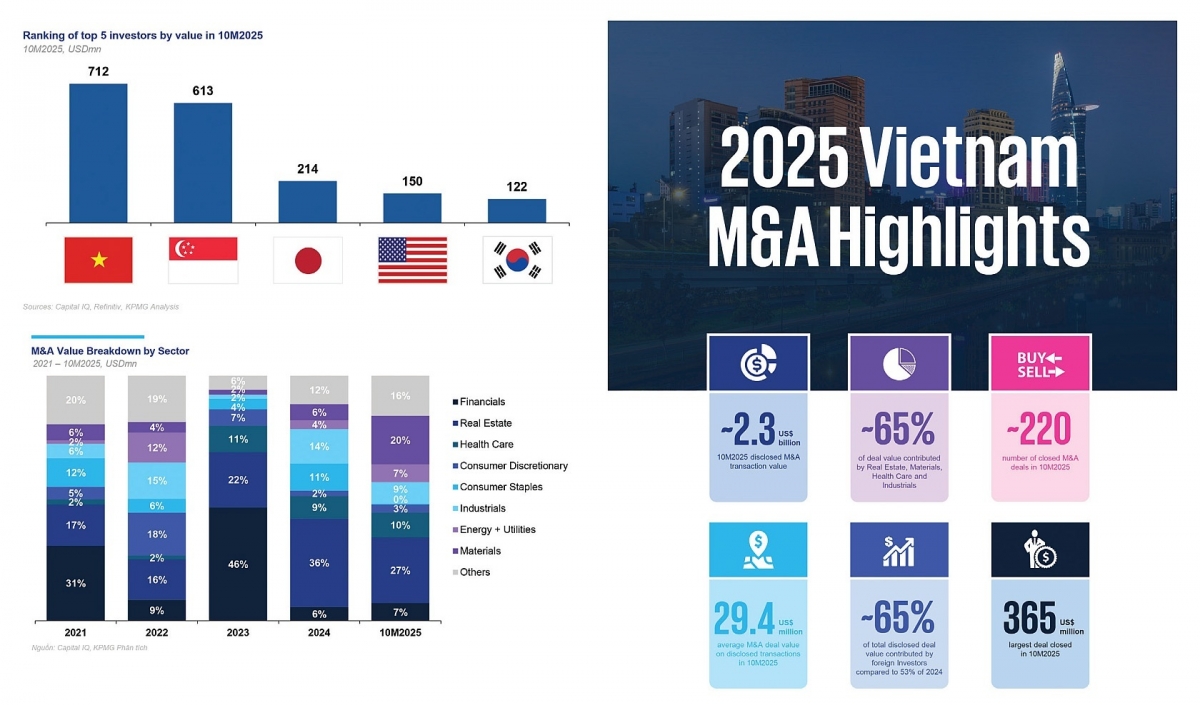INTERNATIONAL INVESTMENT
AND PORTAL
As of January 31, banks have started to release the business results for Q4 and 2023. It is estimated that listed banks' after-tax profits climbed 25 per cent in Q4, a positive increase from the decline momentum in previous quarters. The improvement in Q4 profits is attributed to banks' efforts to step up lending and cut costs.
 Tran Thi Khanh Hien, director of MBS' Reseach Division
Tran Thi Khanh Hien, director of MBS' Reseach Division
According to data from the State Bank of Vietnam (SBV), credit growth doubled in the last quarter of 2023. The growth stems from management agencies' efforts to promote both capital supply and demand. In terms of supply, the SBV increased the credit growth limit for commercial banks at the end of November, as well as quickly removed bottlenecks through debt deferral and without transferring debt groups for specific cases.
In terms of demand, despite the interest rate hike in the world, SBV maintained a low interest rate to increase the accessibility of credit for both businesses and individuals. The interest rate level of new loans is down by about 2 per cent compared to the end of 2022. For the outstanding balance of old and new loans, the interest rate decreased by about 1 per cent compared to 2022.
The highlight in the financial statements is the improvement in net interest margin (NIM) among listed commercial banks. Could you shed some light on this issue?Listed commercial banks saw a significant improvement in NIM in Q4 when capital costs decreased. According to my observation, capital costs increased in the first half of 2023, then decreased sharply since the third quarter following the decline in deposit interest rates.
At the end of 2023, the average 12-month deposit interest rate of private joint stock commercial banks and state-owned joint stock commercial banks is about 5.1 per cent and 4.9 per cent, respectively, down about 150-200 basis points compared to the beginning of the year.
Due to shrinking capital costs, the average NIM of listed commercial banks improved by about 10 basis points in Q4 compared to previous quarters. These are the two main factors contributing to the profit growth of commercial banks in Q4.
Thanks to improvements in Q4 profits, the overall profit of the banking industry jumped by about 3 per cent for the whole year 2023. In particular, the group of large joint-stock commercial banks has all recorded positive profit growth, such as Vietcombank (up 10 per cent), BIDV (up 21 per cent), MB (up 16 per cent), VietinBank (up 19 per cent), and ACB (up 17 per cent).
Meanwhile, HDBank and Sacombank saw their profits increase by 17 per cent and 51 per cent in 2023, respectively. On the contrary, among large banks, Techcombank and VPBank witnessed their profits decrease by 10 per cent and 48 per cent, respectively.
Is there a divergence in the profit picture in 2023?Credit growth reached 13.5 per cent for the whole year, mainly in large-scale commercial banks such as BIDV, MB, HDBank, and Techcombank. These banks can take advantage of their portfolio of corporate customers to promote lending activities amid the slowdown in retail credit and personal loans.
In addition to interest income, banks' non-interest income has also improved since many banks recorded a significant increase in net profit from foreign exchange trading activities, partly compensating for the decline in revenue from bancassurance activities. The ratio of non-interest income to total operating income increased to 25 per cent from 22 per cent last year.
The operating costs of commercial banks will also decrease significantly in 2023. The average cost-to-income ratio of listed banks is estimated to decrease by 200 basis points to about 41 per cent. Many large commercial banks have brought this ratio down to below 35 per cent.
What do you think about non-performing loans (NPLs) in 2023?Asset quality is still a noteworthy point in the picture of business results in 2023. The whole industry's NPL ratio stood at 2.2 per cent, an increase of 64 basis points compared to 2022, the highest NPL level since 2015. Almost all banks continued to record an increase in NPL rates compared to the beginning of the year and previous quarters.
On average, state-owned joint-stock commercial banks have seen an increase of 0.4 per cent compared to the beginning of the year. The figure for the joint stock commercial bank group is 0.7 per cent.
At the same time, the loan loss reserve (LLR) ratio also decreased to the lowest level of 93.8 per cent since the end of 2020. The LLR of the state-owned commercial bank group is significantly higher than that of the joint-stock commercial bank group.
NPLs increased sharply from 1.4 per cent at the end of 2022 to 2.1 per cent at the end of Q2/2023 but only increased by 10 basis points in Q3/2023. Meanwhile, LLR decreased by more than 21 per cent in 1H2023 but only decreased by 5.8 per cent in Q3/2023.
In 2023, there were not many highlights in the bank's capital-raising activities, except for VPBank's successful private placement deal, which sold 15 per cent to SMBC.
 Banks get go-ahead for capital increases
Banks get go-ahead for capital increases
Many banks in Vietnam have received approval for substantial capital hikes, signalling a strategic effort to fortify the financial sector and enhance several essential ratios.
 Banks containing threats of bad debt
Banks containing threats of bad debt
The credit quality of BaoViet Bank has receded as the bank’s non-performing loans (NPL) climbed to almost $70 million by the end of 2023, showing a near 50 per cent jump compared to the start of the year.
 Banks saw profit spike in Q4
Banks saw profit spike in Q4
Several banks saw a significant improvement in the fourth quarter (Q4) last year, leveraging credit growth and improved efficiencies to tackle bad debts.



















